
After several months of strong flows into sustainable funds, global investors have taken a step back. According to Morningstar's data, inflows in the second quarter of 2021 equalled $139.2 billion, down 24% compared with the first months of the year. Morningstar analysts have looked at the sustainable funds landscape four months on from the SFDR.
The slowdown was driven by Europe, the largest market for sustainable funds, where inflows dropped by 25%. The US saw an 18% decline while Australasia and Japan offset the reduction slightly with a 114% increase in the former and level flows in the latter.
On aggregate, the Q2 levels are at the lowest worldwide since Q2 2020. Europe accounted for over 81% sustainable flows this quarter while the US accounted for 13%. Flows in the rest of the world clocked in at $9.2 billion for Canada, Australia and New Zealand, Japan and Asia combined.
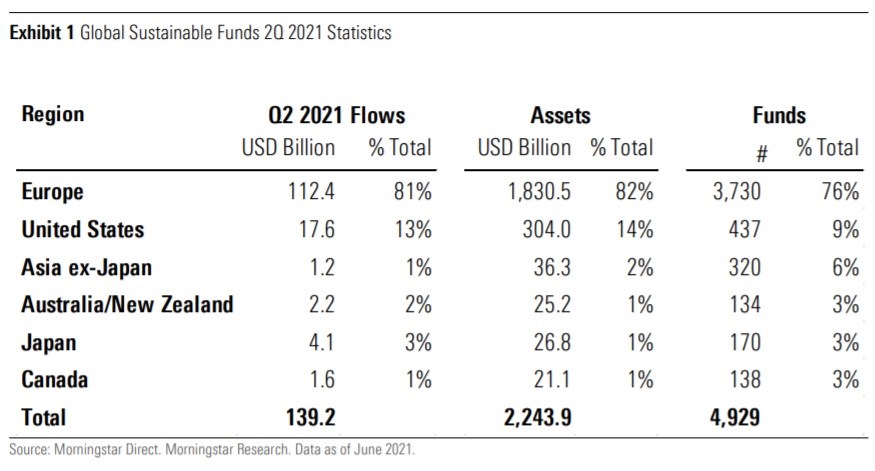
But despite not reaching the record $184 billion inflows that we saw in the first quarter of 2021, the popularity of sustainable funds continues to increase. Assets grew by 12% to $2.24 trillion at the end of June, helped by performance gains, and flows remain above 2020 levels. Asset managers continue to repurpose products into sustainable offerings and 177 new sustainable products have been launched globally, bringing the total number of funds formally considering ESG factors to 4,929.
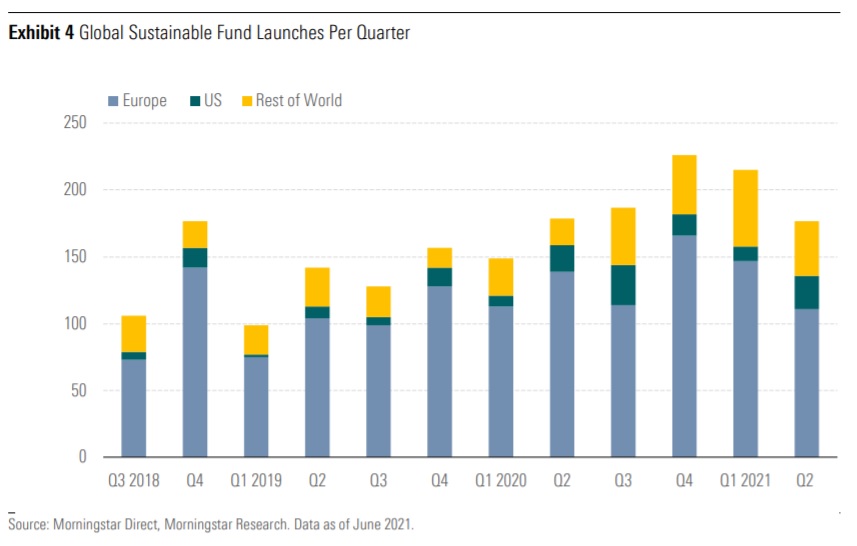
Taking a closer look at the European market, the introduction of the Sustainable Finance Disclosure Regulation (SFDR) means managers are currently busy implementing better ESG transparency measures in their strategies. Over the past quarter, 286 funds have been repurposed and added to the sustainable universe for the region, bringing the total to 3,730 at the end of June. Moreover, sustainable fund flows represented $112.4 billion (or 42.7%) of the $263 billion total fund flows.
The biggest drop in inflows was seen in the fixed income category, which was down 36% over the period – in stark contrast to the 83% increase for conventional fixed income funds. However, in Europe, sustainable equity had less of a popularity drop than conventional equity. Inflows were down by 30.7% compared to 40%. And sustainable equity saw more investments overall than conventional equity too: $64.9 billion versus $48.7 billion. Sustainable allocation funds did increase with record inflows of $22.8 billion, but this 10.3% jump is significantly smaller than the 181% leap for conventional allocation.
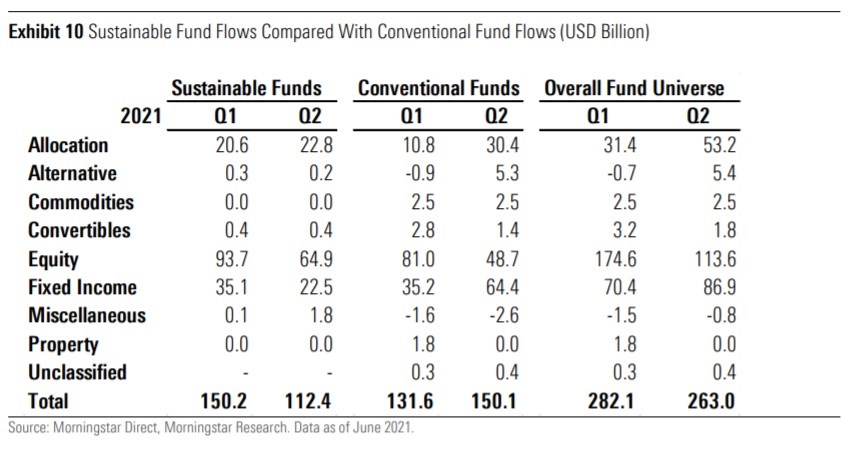
Among the best sellers, only a couple of environmental or climate theme funds managed to make the list, unlike past quarters. In the past three months, investors have preferred broad sustainability and impact-oriented strategy – among those, the newly launched Nikko AM ARK Positive Change Innovation, which attracted $3.6 billion over the period.
Half of the top 10 funds were recent launches, including ASI Progetto Azione Energy Transition, G.A.-FUND-B Sustainable World Bonds, BlackRock ACS World ESG Screened Equity Tracker and CSIF (CH) Equity Switzerland Total Market ESG. The first three were launched in Q2 this year while the last two launched in Q1.
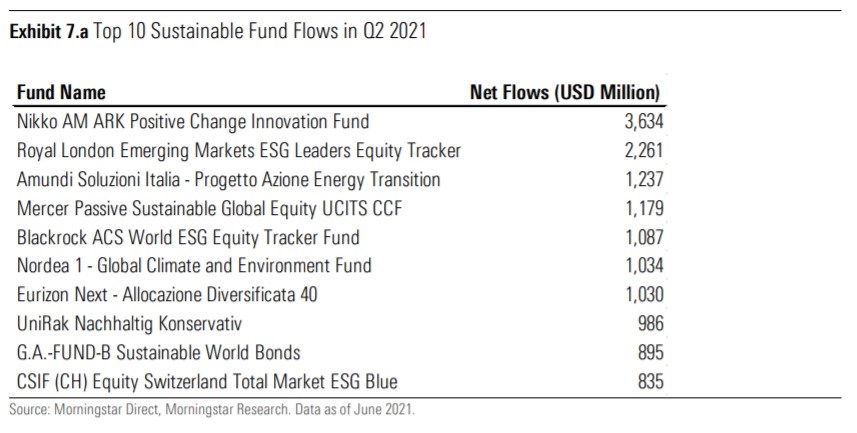
Hortense Bioy, director of sustainability research at Morningstar, notes that the high inflows into the Nikko fund helped propel Nikko AM into the top 10 asset managers in terms of flows over the quarter. “BlackRock continued to top the leaderboard, with $11.3 billion in net new money, followed by Amundi and Nordea,” she says.
Overall, assets in European sustainable funds rose to a new record high of $1.83 trillion at the end of June, representing a 11.5% increase since the end of March. This compares with a mere 4.6% increase in assets for the overall European fund universe.









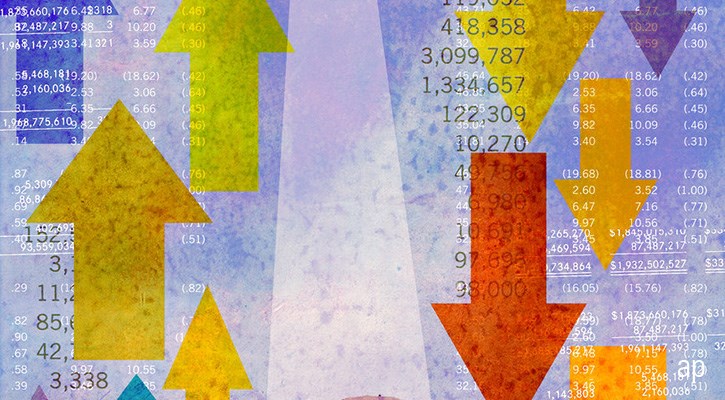


:quality(80)/cloudfront-us-east-1.images.arcpublishing.com/morningstar/6BCTH5O2DVGYHBA4UDPCFNXA7M.png)
















